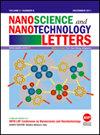Reduction of Breast Cancer Lymph Node Metastasis by Nano-Carbon Absorption of 5-Fluorouracil
引用次数: 2
Abstract
To observe the clinical effect of nano-carbon adsorption of 5-fluorouracil (5-FU) on Breast cancer lymph node metastasis in New Zealand rabbits. A breast cancer animal model was established by local injection of a VX2 tumor tissue suspension in thirty New Zealand rabbits. An observation group, control group A, and control group B were established using a random number table, with ten rabbits in each group. Once tumors with a diameter ≥5 mm were identified in the lymph nodes, the animals received the intervention. The observation group had nano-carbon-5-FU suspension subcutaneously injected, control group A had 5-FU subcutaneously injected through the ear margin, and control group B had 5-FU subcutaneously injected; all received a drug dose of 30 mg · kg–1. Half of the animals in the three groups were killed following treatment for thirty minutes, while the rest of the animals were killed following treatment for seven days. Tumors and lymphatic metastases were removed. Tumor and lymphatic metastasis volume were compared. H&E stained sections were used to determine the ND of tumor cells. A dTUP TUNEL assay using Terminal Deoxynucleotidyl Transferase (TdT) was used to assess tumor cell apoptosis. The expression level of casapase-3 mRNA in tumors and lymphoid tissues was determined using RT-PCR. After treatment for 30 mins, the observation group exhibited a significantly higher 5-FU concentration in lymph node metastases, and significantly lower 5-FU concentrations in plasma and tumors. Nano-carbon can increase the 5-FU concentration in tumor tissue, as well as enhance the clinical effect of drugs on lymph node metastases.纳米碳吸收5-氟尿嘧啶减少乳腺癌淋巴结转移
观察纳米碳吸附5-氟尿嘧啶(5-FU)对新西兰兔乳腺癌淋巴结转移的临床作用。采用局部注射VX2肿瘤组织悬液的方法,建立30只新西兰兔乳腺癌动物模型。采用随机数字表法建立观察组、对照组A、对照组B,每组10只。一旦在淋巴结中发现直径≥5mm的肿瘤,动物就接受干预。观察组皮下注射纳米碳-5-FU混悬液,对照组A经耳缘皮下注射5-FU,对照组B皮下注射5-FU;所有患者均接受30 mg·kg-1的药物剂量。三组中有一半的动物在治疗30分钟后被杀死,其余的动物在治疗7天后被杀死。切除肿瘤和淋巴转移灶。比较肿瘤和淋巴转移体积。H&E染色切片检测肿瘤细胞的ND。采用末端脱氧核苷酸转移酶(TdT)检测肿瘤细胞凋亡。采用RT-PCR检测casapase- 3mrna在肿瘤及淋巴组织中的表达水平。治疗30 min后,观察组患者淋巴结转移灶中5-FU浓度显著升高,血浆和肿瘤中5-FU浓度显著降低。纳米碳可以提高肿瘤组织中5-FU浓度,增强药物治疗淋巴结转移的临床效果。
本文章由计算机程序翻译,如有差异,请以英文原文为准。
求助全文
约1分钟内获得全文
求助全文
来源期刊

Nanoscience and Nanotechnology Letters
Physical, Chemical & Earth Sciences-MATERIALS SCIENCE, MULTIDISCIPLINARY
自引率
0.00%
发文量
0
审稿时长
2.6 months
 求助内容:
求助内容: 应助结果提醒方式:
应助结果提醒方式:


